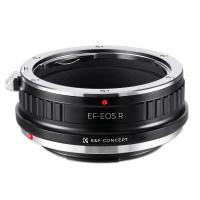Which Electron Microscope Has The Highest Resolution ?
The transmission electron microscope (TEM) has the highest resolution among all electron microscopes. It can achieve a resolution of up to 0.05 nanometers, which is about 100 times better than the scanning electron microscope (SEM). The TEM works by passing a beam of electrons through a thin sample, and then using electromagnetic lenses to focus the electrons onto a screen or detector. The resulting image shows the internal structure of the sample in great detail, including individual atoms and molecules. The high resolution of the TEM makes it an essential tool for studying the structure and properties of materials at the nanoscale, as well as for research in fields such as biology, chemistry, and physics.
1、 Transmission Electron Microscope (TEM)
The Transmission Electron Microscope (TEM) has the highest resolution among all electron microscopes. It is capable of producing images with a resolution of up to 0.05 nm, which is much higher than the resolution of the Scanning Electron Microscope (SEM) and the Scanning Transmission Electron Microscope (STEM).
The TEM works by passing a beam of electrons through a thin sample, which interacts with the electrons and scatters them in different directions. The scattered electrons are then focused onto a screen or detector, which produces an image of the sample. The high resolution of the TEM is due to the fact that the electrons used in the microscope have a much shorter wavelength than visible light, allowing for much greater detail to be resolved.
In recent years, there have been advancements in TEM technology that have further improved its resolution. For example, aberration correction techniques have been developed that allow for even higher resolution imaging. Additionally, cryo-TEM techniques have been developed that allow for imaging of biological samples at near-atomic resolution.
Overall, the TEM remains the gold standard for high-resolution imaging in the field of electron microscopy. Its ability to produce detailed images of samples at the atomic scale has made it an invaluable tool for researchers in a wide range of fields, from materials science to biology.

2、 Scanning Transmission Electron Microscope (STEM)
Which electron microscope has the highest resolution? The answer is the Scanning Transmission Electron Microscope (STEM). STEM is a type of electron microscope that uses a focused beam of electrons to scan a sample and create an image with extremely high resolution. It is capable of achieving resolutions of less than 0.1 nanometers, which is several orders of magnitude better than other types of electron microscopes.
STEM works by scanning a thin slice of a sample with a focused beam of electrons. As the electrons pass through the sample, they interact with the atoms and produce signals that can be detected and used to create an image. The resolution of the image is determined by the size of the electron beam and the sensitivity of the detectors.
STEM has become an essential tool in many fields of science, including materials science, biology, and nanotechnology. It has been used to study the structure and properties of materials at the atomic scale, to investigate the behavior of biological molecules, and to develop new materials and devices.
In recent years, there have been significant advances in STEM technology, including the development of aberration-corrected STEM, which can achieve even higher resolutions. Aberration correction involves correcting for distortions in the electron beam caused by imperfections in the lenses of the microscope. This allows for sharper images and more precise measurements.
In conclusion, the Scanning Transmission Electron Microscope (STEM) has the highest resolution among electron microscopes. Its ability to achieve resolutions of less than 0.1 nanometers has made it an essential tool in many fields of science, and recent advances in technology have further improved its capabilities.

3、 Aberration-Corrected Transmission Electron Microscope (AC-TEM)
The Aberration-Corrected Transmission Electron Microscope (AC-TEM) is currently considered to have the highest resolution among electron microscopes. This is due to its ability to correct for aberrations that occur when electrons pass through a lens, which can cause blurring and distortion in the resulting image. By correcting for these aberrations, the AC-TEM is able to achieve resolutions of less than 0.1 nanometers, allowing for the visualization of individual atoms and their arrangements.
In recent years, there have been advancements in other types of electron microscopes, such as the Scanning Transmission Electron Microscope (STEM) and the Cryo-Electron Microscope (Cryo-EM), which have also achieved high resolutions. However, the AC-TEM remains the most widely used and well-established technique for achieving atomic-scale resolution.
One of the key advantages of the AC-TEM is its versatility, as it can be used to study a wide range of materials, including metals, semiconductors, and biological samples. It is also capable of performing a variety of imaging and spectroscopic techniques, such as high-resolution imaging, electron diffraction, and energy-dispersive X-ray spectroscopy.
Overall, the Aberration-Corrected Transmission Electron Microscope (AC-TEM) is currently the electron microscope with the highest resolution, and its continued development and refinement will likely lead to further breakthroughs in our understanding of the atomic-scale structure and properties of materials.

4、 Helium Ion Microscope (HIM)
The Helium Ion Microscope (HIM) is a relatively new type of electron microscope that has gained popularity in recent years due to its exceptional imaging capabilities. The HIM uses a beam of helium ions instead of electrons to create images, which allows for higher resolution and better contrast than traditional electron microscopes.
In terms of resolution, the HIM currently holds the record for the highest resolution of any type of microscope. It can achieve resolutions as low as 0.35 nanometers, which is more than twice as high as the best electron microscopes. This level of resolution allows researchers to see individual atoms and molecules, making it an invaluable tool for materials science, nanotechnology, and other fields.
One of the advantages of the HIM is that it can image a wide range of materials, including insulators and non-conductive materials, which are difficult to image with traditional electron microscopes. This makes it a versatile tool for a variety of applications, from semiconductor research to biological imaging.
While the HIM is still a relatively new technology, it has already made significant contributions to scientific research. As the technology continues to improve, it is likely that the HIM will become an even more important tool for understanding the world at the atomic and molecular level.































There are no comments for this blog.